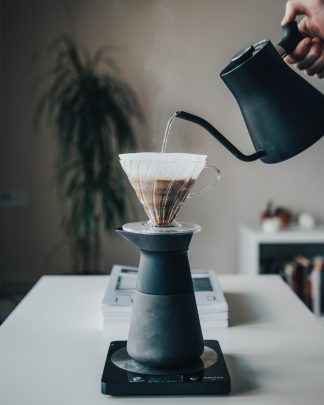Flavour
- Bold coffee is not necessarily Dark. Roasting coffee very dark can destroy the delicious flavour compounds and render them all towards charcoal. Why use specialty grade coffee only to char the interest out of it?
- You can engage in coffee tasting at any level of expertise. “I like this” is perhaps a more valid finding than noticing particular spice in the coffee tasting wheel. But finding a spice can be fun too. After all it is about enjoyment!
- Many specialty coffees become sweeter as they cool.
- Coffee absorbs aromas! It should be stored away from other “smelly” things like onions and perfumed soap. The fridge and freezer are full of random smells that can ruin your coffee.
- The oils in coffee are not oils… they are soluble and flavourful organic compounds.

Espresso
- There is no X in espresso 🙂
- Espresso is not a roast level, nor a kind of coffee. Espresso is a method of preparation in which the hot water is pushed through the grounds under pressure.
- Crema in espresso decreases as coffee stales. Robusta species of coffee creates more crema.
- Espresso crema often has different taste and aroma characteristics than does the liquid.
- O m’gosh there is a lot to say about espresso!

Coffee Growing
- Commercially grown coffee is either Robusta or Arabica. Robusta coffee is low quality and is bitter and unpalatable. Quality coffee does not contain robusta coffee.
- Arabica coffee grows in equatorial mountainous regions.
- Specialty coffee is a technical term used in grading green beans.
- Coffee is a shade loving understory tree.

Freshness
- After roasting, coffee begins to oxidize causing its delicious flavours to drop off over time. Then, after about 3 months foul smells and acrid tastes begin to develop and at some point it becomes utterly nasty. That is why we have always roast dated our coffee! We were the first roaster in Canada to roast date our coffee back in 2003.
- Freezing coffee can slow the oxidation process. However each time the coffee is removed and replaced, the temperature fluctuations tamper with the moisture resulting in other quality problems. The freeze thaw cycles on frost free freezers is similar.
- Sealed packaging keeps out other odours and can slow the inevitable impact of oxidation somewhat. However, even with vacuum sealing and nitrogen flushing enough oxygen remains inside the package to ravage the coffee.
- Coffee likes to rest after being roasted. Flavours develop over 1 to 5 days after roasting and then fade slowly over the next 4-6 weeks.
